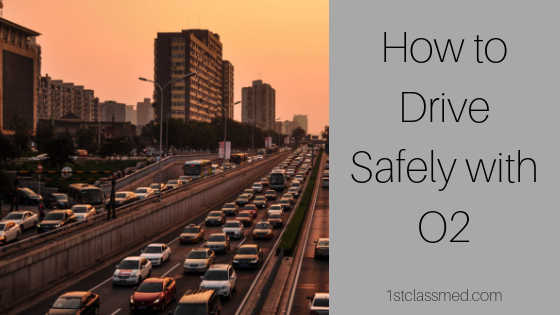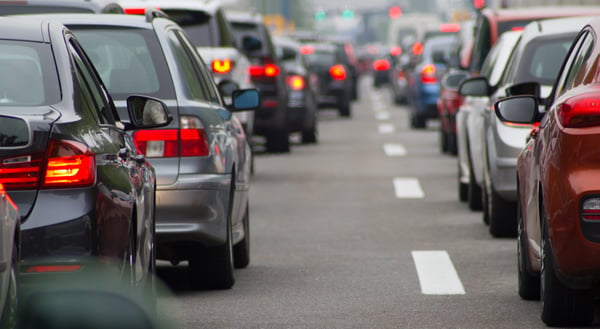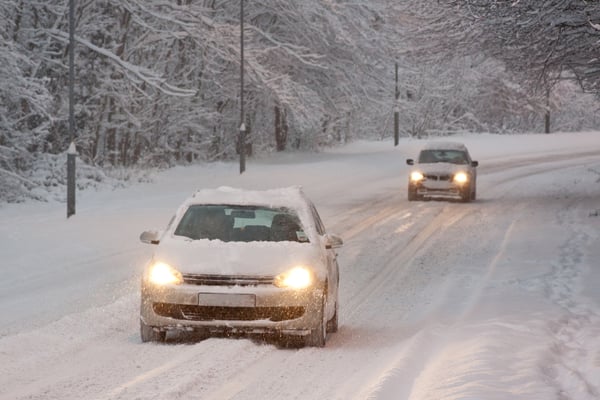
Many of us learn to drive in our late teens and drive often the rest of our lives, but something, like an oxygen diagnosis, can change that.
If you have been recently prescribed oxygen and have purchased a portable oxygen concentrator, you may not be sure how to drive, or if you even can.
There are a few tips and tricks to know when you decide to get behind the wheel.
Most Important Part of Driving with O2:

Besides focusing on the road, or driving the speed limit, making sure your unit is charged is key.
Not only is your safety on the line if your concentrator is not charged, but so are others drivers.
It is possible to not get enough oxygen if the concentrator’s battery dies and end up having a medical emergency, leading you to take your eyes off the roads or even losing consciousness.
Outside of making sure your unit is charged, look into car chargers for your unit, as well as additional batteries.
Many POCs have an AC and DC power supply, which will allow your concentrator to be charged while you are at home or while you are driving.
If You Are Driving:
If you are behind the wheel, first check to make sure you can legally drive in your state while you are on oxygen.
Some health conditions may disqualify you from driving a vehicle, as it can be deemed unsafe for you and other drivers.
If your equipment were to fail or malfunction while you are driving it can lead to a possible accident, and your state may not want that risk.
Contact your local DMV and ask them if you are able to drive while on supplemental oxygen, they may have guidelines you will need to follow, or you may be told you cannot drive.
Also make sure you have had good sleep before you get behind the wheel with your oxygen concentrator.
If you are able to drive, put your concentrator in the seat next to you, and buckle it up so it doesn't go flying if you need to hit the brakes.
If someone is sitting in the seat next to you, put the concentrator on the floor by the passengers feet so your cannula can still reach your nose.
We do not reccomend putting your O2 behind you, because if it were to malfunction in anyway, it can be very dangerous to try and reach it.
If Someone Else Is Driving:
Luckily, if you cannot drive, there are no laws regulating passenger use of oxygen.
If you have someone in your life that is in good health, request that they take you where you need to go.
Preparing Your POC For Travel:
It is very important to never leave your portable oxygen concentrator in your car when you are not, heat damage from the sun or a very hot car can permanently damage your unit and require you to purchase a new one.
Always bring your charging cord wherever you go, as you could get stuck taking a detour or having to spend more time on your trip than planned.
Taking Public Transportation:
Public trains or buses cannot deny you for having an oxygen concentrator, but always make sure you have your doctor’s note just in case.
As for airplanes, contact your airline ahead of your flight to make sure you can be on the flight.
Airlines often require batteries to last your flight length and a half, so if your flight is 4 hours, you would be required to have 6 hours of battery life to last the flight.
Driving In Winter With O2:
If you are able to drive yourself and do not require someone else or public transportation to get you to where you need to go, you still need to be prepared for weather.
Though most of the year driving is not an issue (sunny days, rain, clouds), driving in the winter can be very dangerous if you live in an area where it snows.
Winter driving is dangerous for anyone, not just those on oxygen, so in the winter you have to pay attention to your driving, and those around you.
Prepare an emergency kit for your car, so if your car gets stuck or breaks down in the middle of winter you are able to take care of yourself.

What You Will Need:
- Blankets
- Jumper Cables
- Ice Scraper
- Non-perishable Food
- Water
- Hat
- Gloves
- Boots
- Emergency Flares
- First Aid Kit
- Battery Powered Radio (with new batteries)
- Hand Warmers
- Medications
- Cell Phone Charger
- POC Charger
- Cat Litter/Sand (for traction)
Safety Tips For Winter:
Always make sure your gas tank is at least half full (we recommend ¾ full) as it can prevent your fuel line from freezing.
When driving in slick conditions, or poor visibility, keep a minimum of 3 car lengths between you and the car in front of you.
Clear your hood of any snow, as when you are driving it can fly up onto your windshield and block your view of the road.
Make sure your windows are scraped of any ice, both the front and back windshields, and then the side windows so you can see your side mirror.
Keep in touch with family and friends and let them know if you are traveling, and where you are traveling so if you do not reach your destination someone will know.
Be careful of bridges and other areas that may be slick when driving.
Check the weather before you leave, as conditions can change quickly and make driving very dangerous.
Conclusion:
Make sure you contact your local DMV to make sure you are allowed to drive with a portable oxygen concentrator, and if you cannot, change travel plans.
Pack an emergency kit to leave in your car in case you are stuck in a situation where you are not near a busy road.
Though driving in the snow can be easy for those who have done it most of their life, you can still be at risk of other drivers who may not have had the same experience.
Always be cautious when driving in winter, as even though you cannot see it, ice can make you lose traction and get into an accident.



